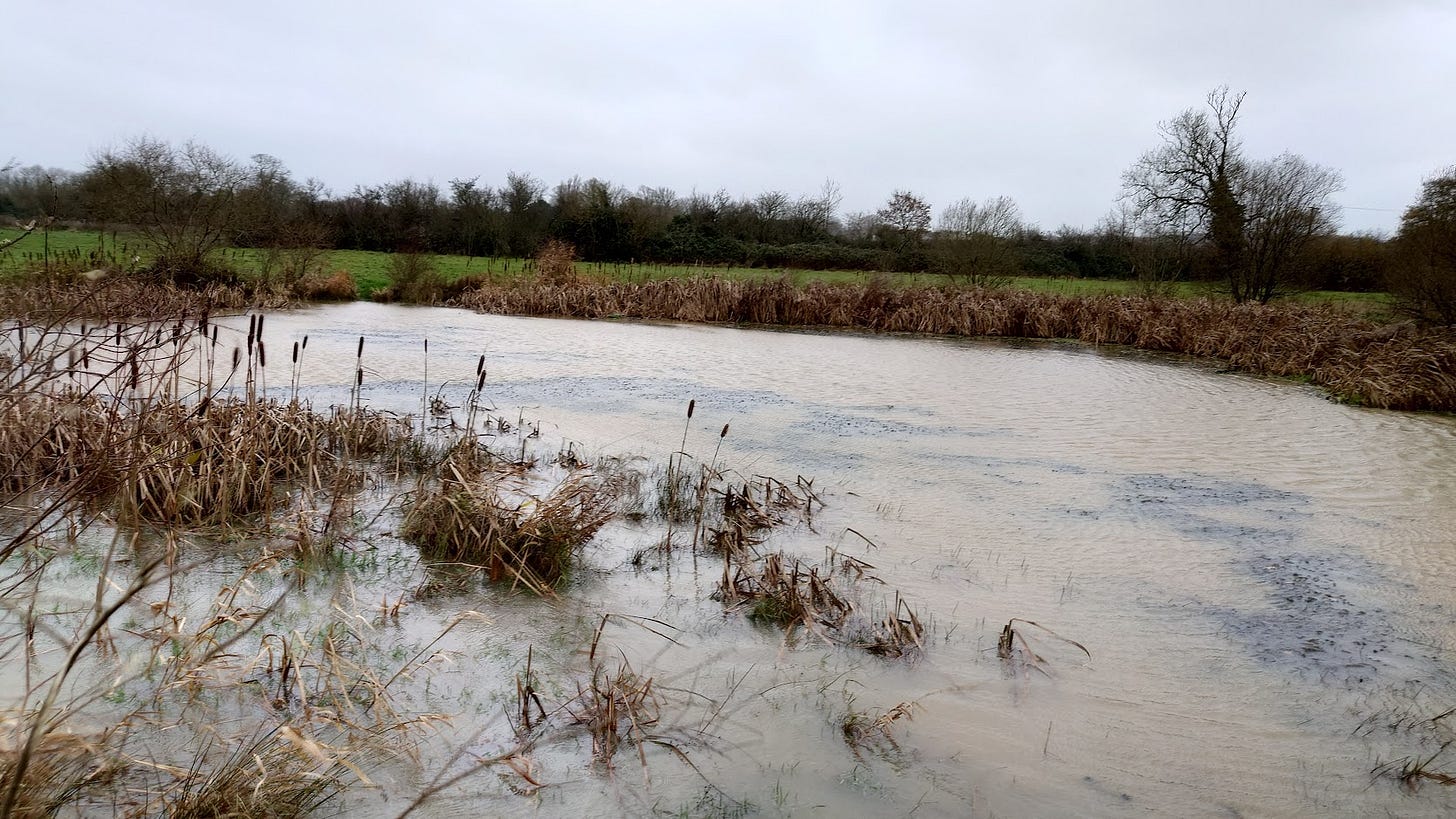Storm Bert, coping with a flooded garden and natural flood management
The calm after the storm
This week’s post is two days earlier than usual to help those readers whose gardens are waterlogged or flooded at the moment.
Having experienced Storm Bert first hand, I feel for all those who now are suffering the aftermath of the flood waters. We got through relatively unscathed, the winds were strong, but we didn’t get as much rain as threatened, although water levels are very high. It was of immense relief to get up on Sunday morning, look out the window and see that the five veteran oaks in our front field were still upright.
The poultry pens didn’t get off quite so well and I had a panic when I saw that the calf hut that shelters our two turkey stags had blown to the other side of their pen. Fortunately, it doesn’t have a floor and sits on a pad of straw so it just lifted up (despite being tied down), leaving what were probably rather surprised boys unharmed.
Some of the nets had lifted and it was a bit …



